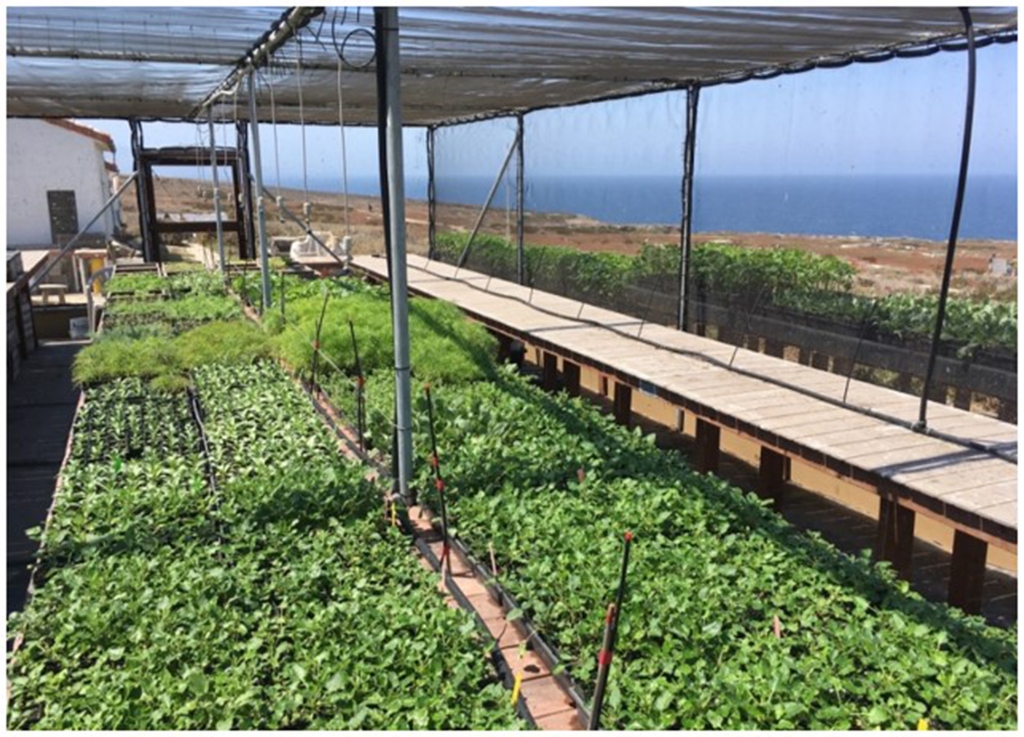
This nursery was constructed in 2017 (replacing an older nursery structure) to propagate plants for seabird habitat restoration on East Anacapa Island. Total capacity for the nursery is approximately 5, 200 plants.
Seabirds on the Channel Islands
The Channel Islands are vital habitat for seabirds, providing essential nesting and feeding grounds for 99% of seabirds in southern California. Twelve species of seabirds depend on the rich marine resources and the isolation of these offshore islands to provide food and undisturbed nesting grounds safe from predators. The islands host half of the world's population of ashy storm-petrels and western gulls and 80% of the U.S. breeding population of Scripps's murrelets. In addition, the islands are home to the only major breeding population of California brown pelicans in the western U.S.
The Channel Islands are critically important to seabirds, supporting:
- the largest breeding colonies of seabirds in southern California
- the only breeding colonies of California brown pelicans in California
- the only protected colonies of California brown pelicans and Scripps's murrelets on the West Coast of the U.S.
- the largest colonies in southern California of Cassin's auklet, western gulls, Scripps's murrelets, rhinoceros auklets, tufted puf fins, ashy storm-petrels, double-crested cormorants, pigeon guillemots, and black storm-petrels
- over 30 years of seabird research
Impacts to Seabirds
Seabirds in the park and throughout southern California are impacted by many factors including contaminants, oil spills, invasive species, and changes in the ocean environment. For example, the introduction of DDT, a long-lived pesticide, into the marine environment has severely impacted seabird populations at the islands. Before DDT was banned in the 1970s, California's brown pelican population suffered nearly complete reproductive failure.
On land, predation and habitat disturbance by invasive species have impacted seabirds. On Anacapa, introduced black rats preyed heavily on seabird eggs and chicks severely depleting populations of Scripps's murrelets. Seabird habitat has also been severely impacted by grazing of non-native animals, including sheep and rabbits. Invasive red-flowered iceplant (intentionally introduced by the U.S. Coast Guard) resulted in further degradation of native plant communities.
Monitoring and Restoration
Through monitoring and restoration programs, the park and its partners, including the California Institute of Environmental Studies and The Nature Conservancy, are working to conserve critical nesting habitat and to protect the integrity of island and marine ecosystems that support seabird populations in southern California. Several of these projects have been funded by the Montrose Settlements Restoration Program, a multi-agency government program dedicated to restoring natural resources harmed by DDTs and PCBs released into the environment. Restoration accomplishments include:
- Eradication of all non-native animals, including rats in 2002. Shortly after the eradication of rats, scientists recorded a substantial recovery of native wildlife and rare seabirds, including Scripps's murrelets and Cassin's auklets.
- Removal of red-flowered ice plant on East Anacapa Island which once covered about 20% of the island. This effort by park staff, cooperators, and volunteers, paved the way for the return of native plants through restoration.
- Between 2016-2019 four acres near the lighthouse were restored by transforming an area entirely dominated by invasive non-native crystalline iceplant to a diverse landscape of coastal sage scrub. Early results showed multiple benefits with additional species utilizing the restored habitat area, including seabirds such as western gulls, many species of migratory birds, and co-benefits including a thriving insect community within the structure of the restored shrub habitat and multiple terrestrial bird species feeding on and pollinating flowering native plants. The project also increased nesting habitat for murrelets by more than 50% on Anacapa.
For 2020 through 2023, funding for restoration on Anacapa Island is provided by the Wildlife Conservation Board Pacific Flyway Conservation Program. This project will focus on restoring 3 acres of breeding habitat for the Scripps's murrelet and other migratory birds (seabird and terrestrial) by removing non-native invasive plant species and planting native species. This project will more than double available breeding habitat at Anacapa Island and increase available nesting habitat for murrelets by around 30% in California. Habitat restoration for seabirds such as the Scripps's murrelet, even in small acreages, can provide large benefits due to the colonial nesting behavior of these migratory birds that have high nest densities.
This work will be accomplished by using the California Conservation Corps as well as an established base of volunteers and students. Volunteers assist with all aspects of the restoration program, including seed collection, weeding, nursery work, outplanting, and monitoring.
Is there something we missed for this itinerary?
Itineraries across USA


















































